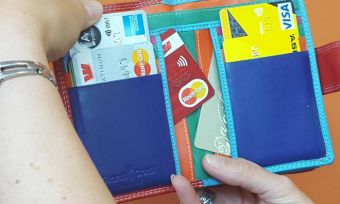When considering the right loan for your purpose, there are three key factors to keep in mind. These are:
- The amount you want to borrow.
- The length of time you want to borrow the money for.
- Whether the loan will be secured (against an asset, such as your house or a car) or unsecured.
The amount you want to borrow is fairly straightforward. Be aware, though, that fees and charges will bump up your monthly repayment figure, so always factor those in before you apply for a loan.
The length of time you take out the loan for is entirely dependent upon your capacity to repay. The only way to truly know how much you can afford is to have a comprehensive written budget and to ensure that the loan repayment can be easily absorbed. Don’t forget to take into account any future increase in costs or unpaid leave you might take down the track. Many personal loans are available for up to 10 years.

There are two things to take into consideration here – cut the loan term too short and you may find yourself struggling to find that larger amount of money each month. On the other hand, if you spread the loan over too long a term, you’ll pay more interest overall. Let’s look at an example:
| $10,000 borrowed over 10 years | |
|---|---|
| Amount | $10,000 |
| Interest rate | 16% |
| Monthly repayment | $168 |
| Total repayment over 10 years | $20,102 |
| $10,000 borrowed over 6 years | |
|---|---|
| Amount | $10,000 |
| Interest rate | 16% |
| Monthly repayment | $217 |
| Total repayment over 10 years | $15,618 |
So, in the example above, reducing your loan term by four years will increase your monthly repayments by $49, but will reduce your total repayment by almost $4,500.
 Canstar’s pre-application checklist:
Canstar’s pre-application checklist:
- Read our guide on what to think about when choosing a personal loan.
- Use our personal loans repayment calculator and work out what kind of repayments and interest rate you could afford on top of your normal budgetary expenses.
- Decide on whether you want a secured or unsecured loan.
- Get a copy of your credit rating, to make sure you’re not going to be rejected for your loan application and get a black mark on your credit history.
Loans in New Zealand – secured or unsecured?
Before you apply for a loan, it’s important you understand the difference between secured and unsecured loans in New Zealand.
Secured means the loan is taken out against an asset, giving the lender the right to repossess that asset should you default. A secured loan type is seen by the lender as a lower business risk and, as such, a secured loan will tend to attract a lower interest rate.
An unsecured loan is the opposite. Money is lent without the lender taking security over an asset. This is deemed riskier by the lender and the interest rates charged will generally reflect this.
Compare secured and unsecured loans with Canstar
Compare interest rates before you apply for a loan
Before you take on additional financial obligations like a personal loan, you should always get some good financial advice. You need to work out a solid budget and know that you can afford to add monthly loan repayments to that budget. In life, unexpected things happen to the best of us. It’s better to scan the market when getting a personal loan to ensure you don’t fall into debt because your budget was stretched too tight.




Share this article